Explore GIS Courses
What’s New in 2023-24?
The GIS I-II-III sequence has been revised into a new format. Beginning this year, students can look forward to taking GISC 28100/38100 Introduction to Geocomputation, GISC 28200/38200 Spatial Analysis Methods in Geographic Information Systems, and GISC 28300/38300 Topics in Geographic Information Science instead.
In addition, we’ll offer a new course, GISC 27104 Movement Data and Analysis, and a fresh version of GISC 28800 History of Cartography.
We invite you to learn more about the course changes below.
Winter 2024
History of Cartography
- GISC 28100 (ARCH 28202)
- Instructor: Yue Lin
- T Th 9:30–10:50AM
Course Description
This course offers a grand overview of the key developments in mapmaking throughout history worldwide, from pre-literate cartography to the modern interactive digital environment. It looks at the producers, their audience, the technologies and artistic systems used, and the human and global contexts in which they developed. The course also draws on the extensive map collections
of Regenstein Library.
For more information, view the tentative syllabus or contact Dr. Lin at liny2@uchicago.edu
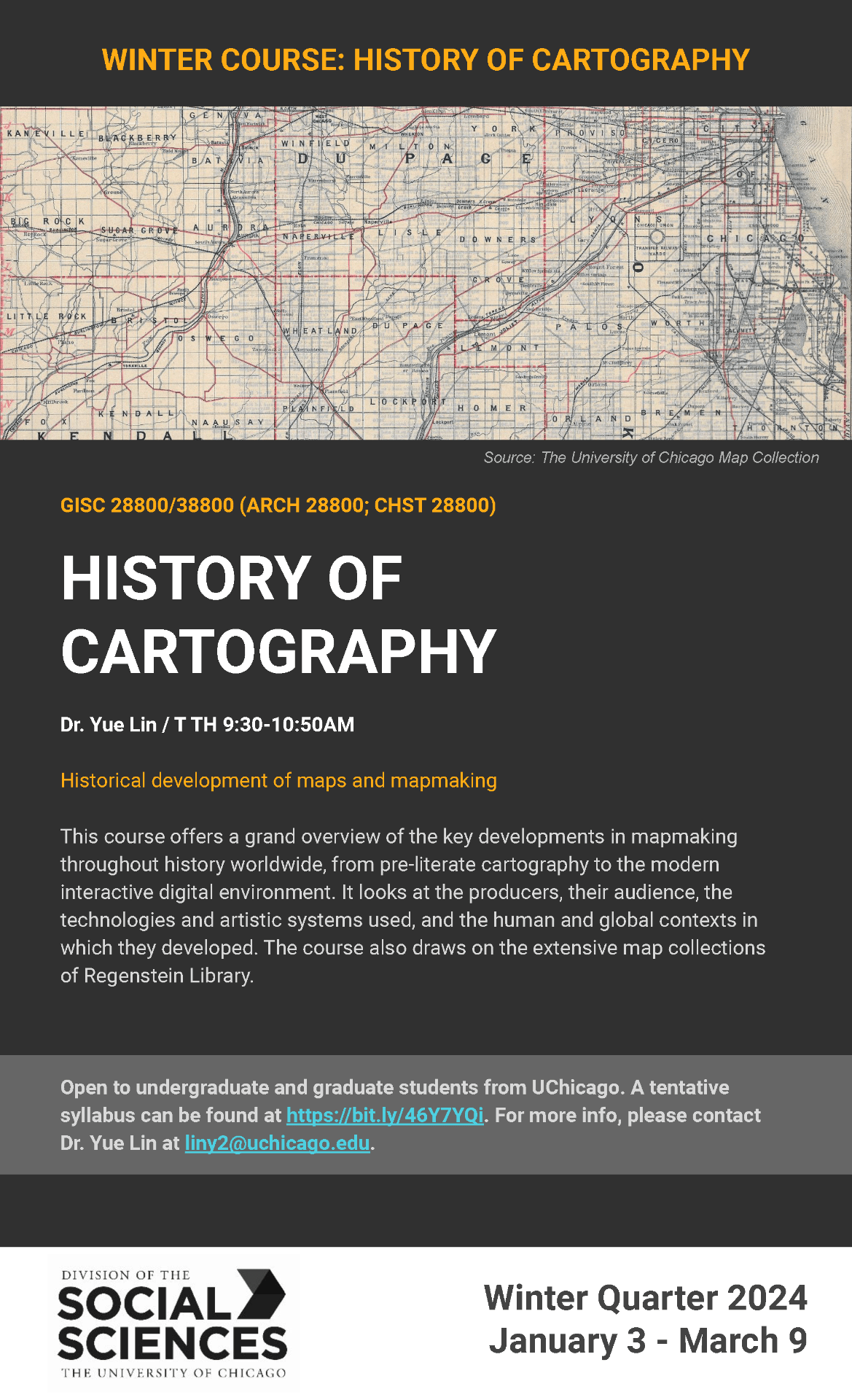
Introduction to Geocomputation
- GISC 28100 (ARCH 28202)
- Instructor: Yue Lin
- T Th 3:30–4:20PM
Course Description
This course investigates the theory and practice of infrastructure and computational
approaches in Geographic Information Science. Geocomputation is introduced as a
multidisciplinary systems paradigm necessary for solving complex spatial problems and facilitating new understandings. Students will learn about the elements of spatial algorithms and data structures, geospatial topologies, spatial data queries, the basics of geodatabase architecture and design, and their implementation in open source software, such as R or Python.
For more information, view the tentative syllabus or contact Dr. Lin at liny2@uchicago.edu
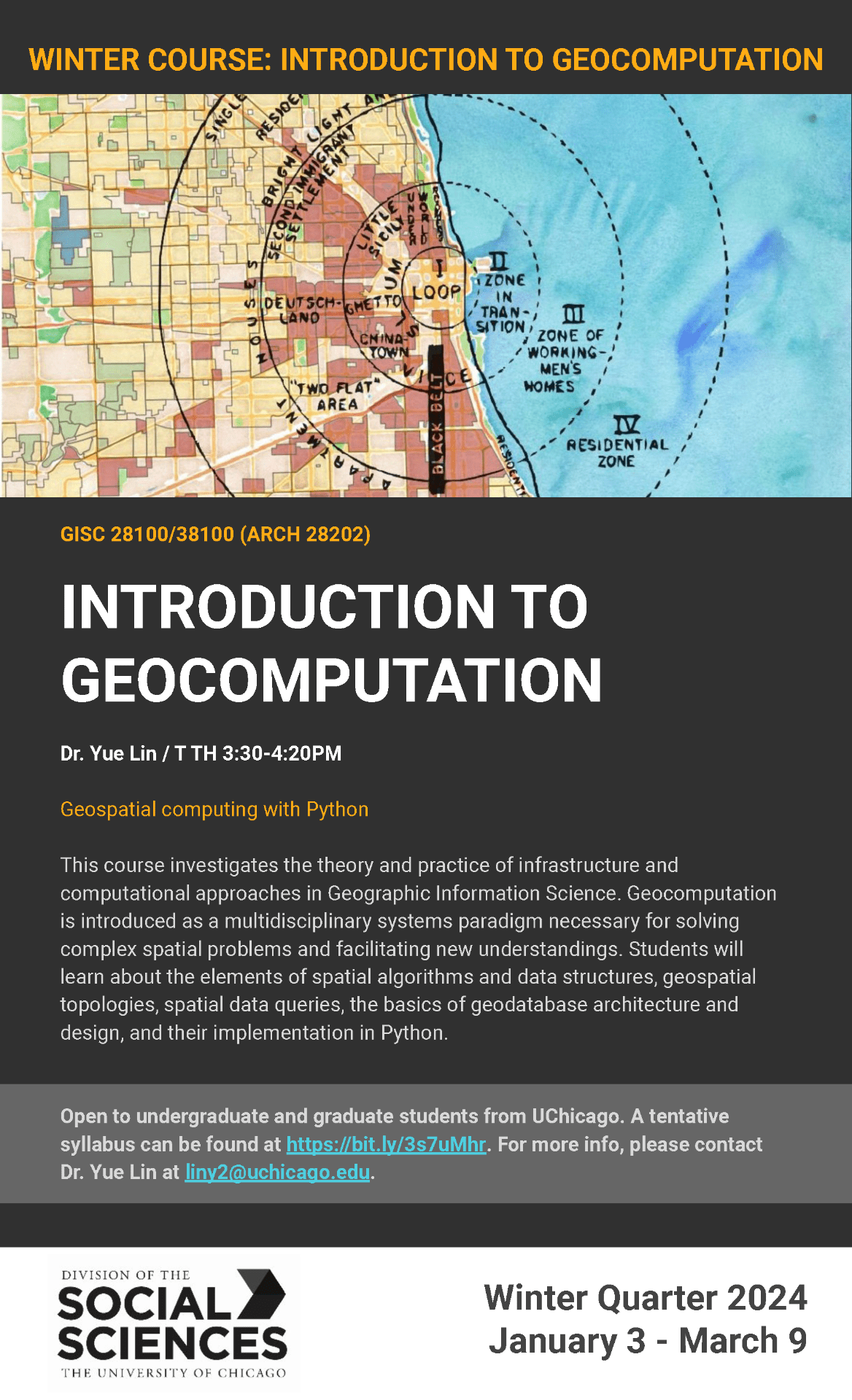
Spatial Analysis Methods in GIS
- GISC 28200/38200 (ARCH 28402)
- Instructor: Crystal Bae
- M W F 9:30–10:20AM
Course Description
This course provides an overview of methods of spatial analysis and their implementation in geographic information systems. These methods deal with the retrieval, storage, manipulation and transformation of spatial data to create new knowledge. Examples are spatial join operations, spatial overlay, buffering, measuring accessibility, network analysis and raster operations. The fundamental principles behind the methods are covered as well as their application to real-life problems using open source software such as QGIS.
For more information contact Professor Bae at cbae@uchicago.edu
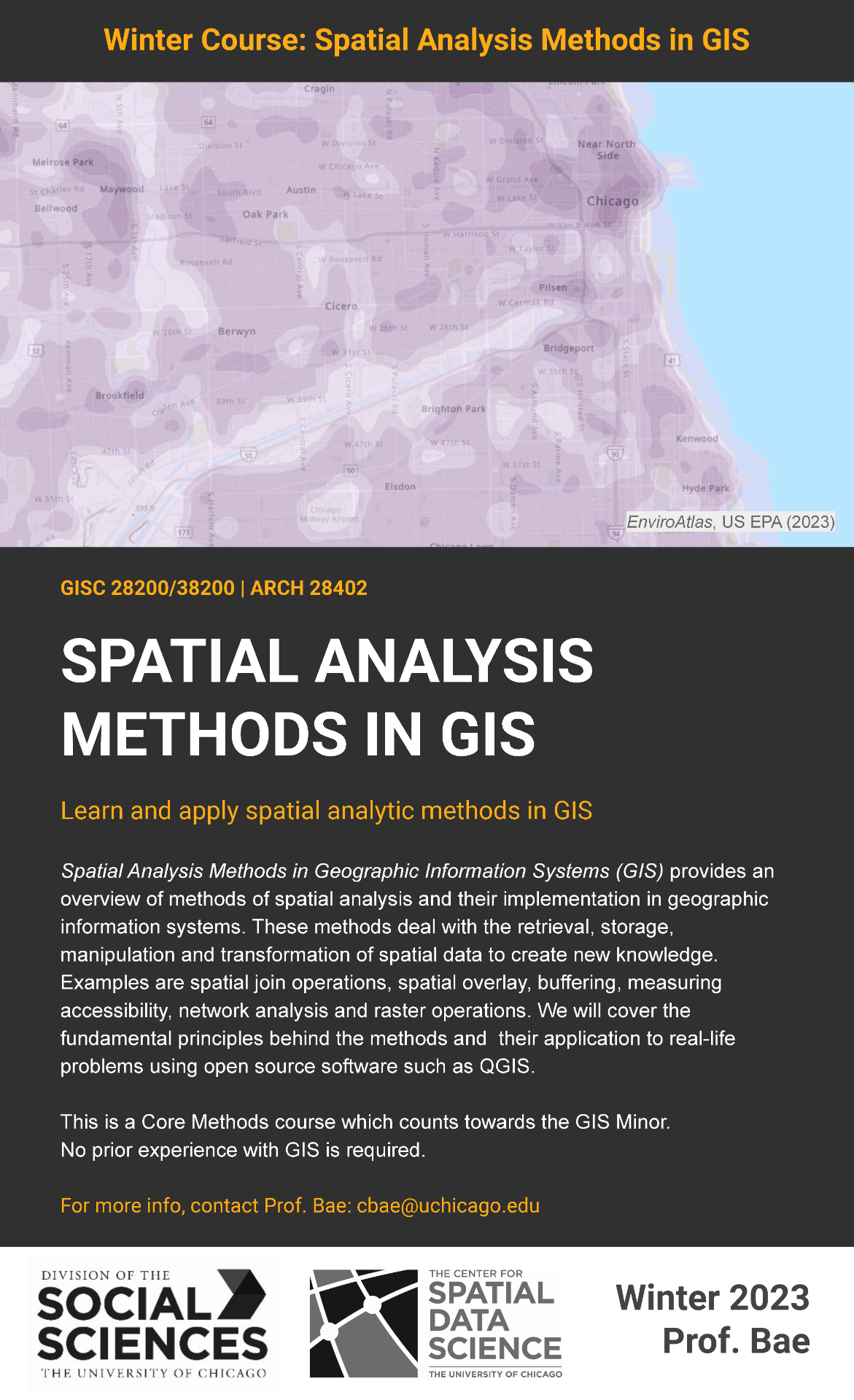
Autumn 2023
Cartographic Design and Geovisualization
- GISC 27100/37100
- Instructor: Crystal Bae
- T/Th 9:30-10:50
Course description
This course is a hands-on introduction to core principles and techniques associated with cartographic design, especially with regards to digital map design and the geographic visualization of data. Main topics include map generalization, symbology, scale, visual variables, scales of measurement, 2D and 3D design, map animation and interaction, and web mapping. Students will work with open-source GIS software and web tools, culminating in a final project and peer critique.
Course Highlights
In this course, you will work with free and open-source geographic data visualization and Geographic Information Systems (GIS) software and tools, presenting your design assignments in class for student-led peer critiques, culminating in a final design portfolio at the end of the course.
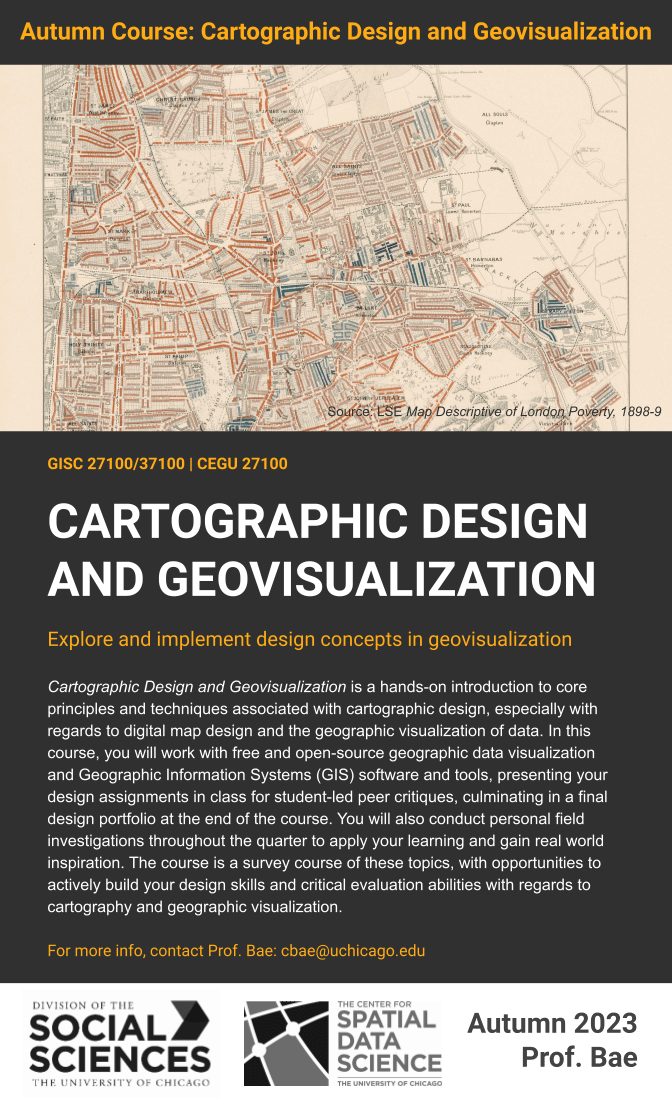
Movement Data Analysis
*New Course*
- GISC 27104/37104
- Instructor: Crystal Bae
- T/Th 2-3:20
Course description
This is a methodological course overviewing movement data types, common data sources and applications, movement representations and scale, movement parameters, 2D and 3D representations of movement, and types of visualization approaches (trajectories, flow maps, network-based). The topics covered draw from application areas in human transportation, temporary travel and migration, and non-human animal movement.
Course Highlights
The course will center around weekly assignments working with movement data, and there will be an individual project that will allow students to explore their own topical interests and data sources, such as to expand their interest in a particular research area.
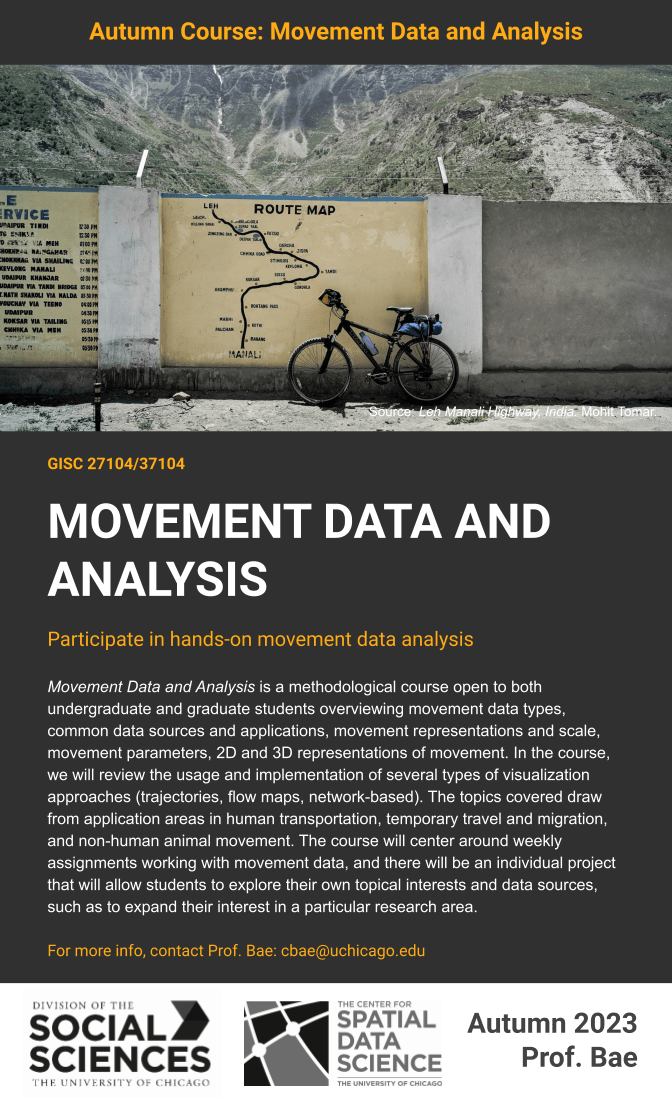
Topics in Geographic Information Science
- GISC 28300/38300 (ARCH 28602)
- Instructor: Yue Lin
- T Th 11–12:20
Course Description
This advanced course extends and connects both foundational and functional concepts in Geographic Information Science. Students will gain a comprehensive understanding of key areas, including web GIS as well as advanced geospatial visualization techniques. In addition, the course emphasizes the utilization of the R programming language, exposing students to its application within open source software environments through advanced programming and scripting languages.
Course Highlights
- Advanced Geospatial Visualization: Unleash your creativity in geospatial visualization. Learn advanced techniques to transform complex datasets into insightful and visually stunning representations, enhancing your ability to communicate spatial insights effectively.
- Web GIS Expertise: Get ready to master the world of web GIS. The course equips students with the skills to manage and visualize spatial data using cutting-edge web-based tools and technologies.
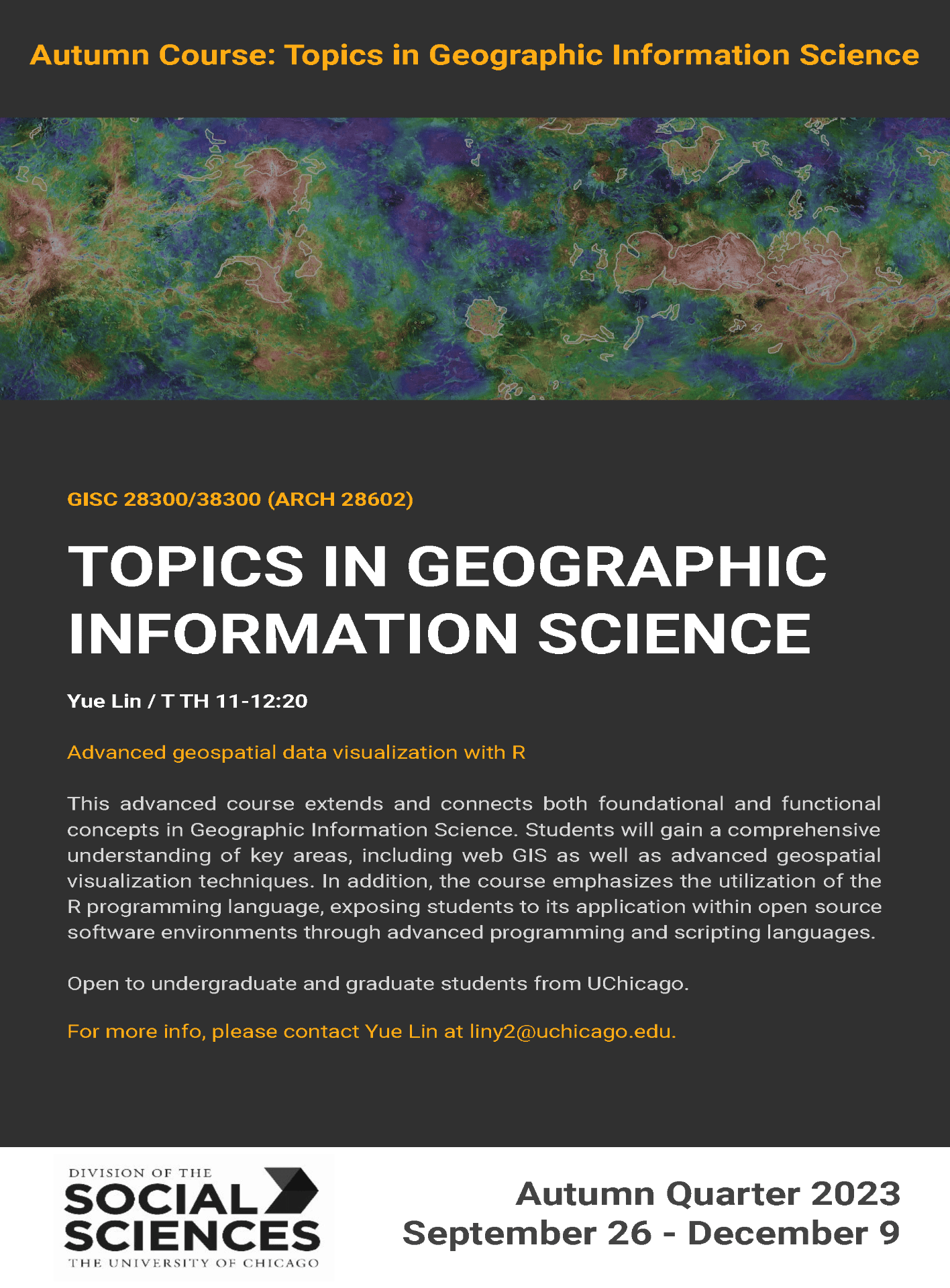
This course emphasizes practical, hands-on experience. You’ll apply your learning in real-world scenarios, honing your skills through exercises, projects, and interactive labs.